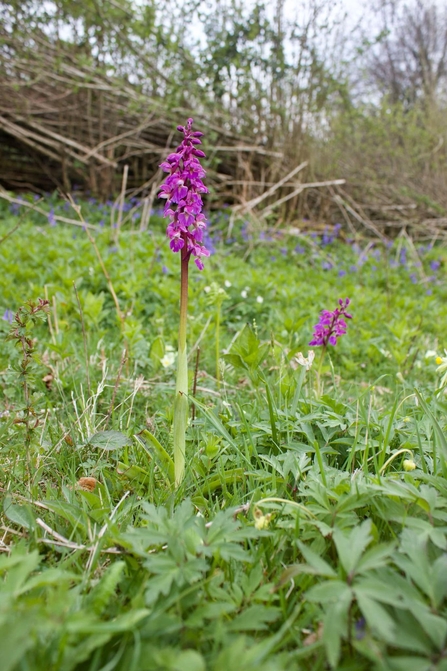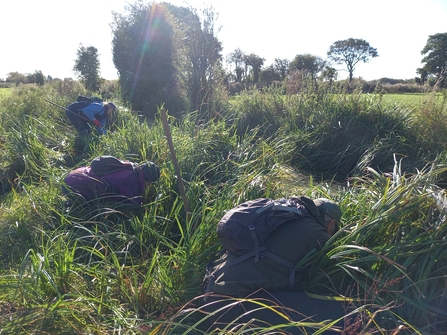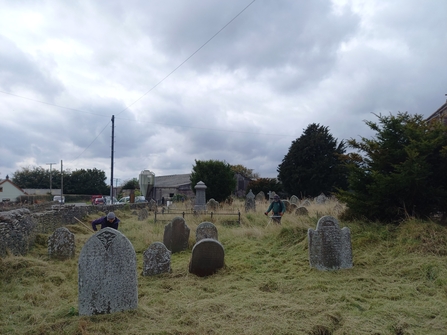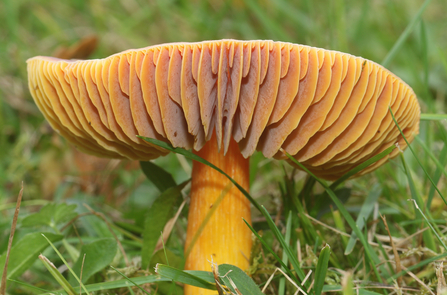From the Usk to Wye Reserves
The Usk to Wye reserve volunteers recently got stuck into clearing large areas of bramble in Prisk Wood. Previous work to fell Ash in this woodland meant the canopy let a lot more light into the understory, causing bramble growth to skyrocket. This unfortunately has shaded out a lot of the interesting and rare woodland flora previously recorded at Prisk. For example, Herb Paris, Early Purple Orchids and Hairy violets. Not to mention the swathes of Bluebells that carpet the woodland in Spring. With the dedication and determination of volunteers we are clawing back areas from the bramble, with the hopes of these beautiful plants reappearing in the coming years.






